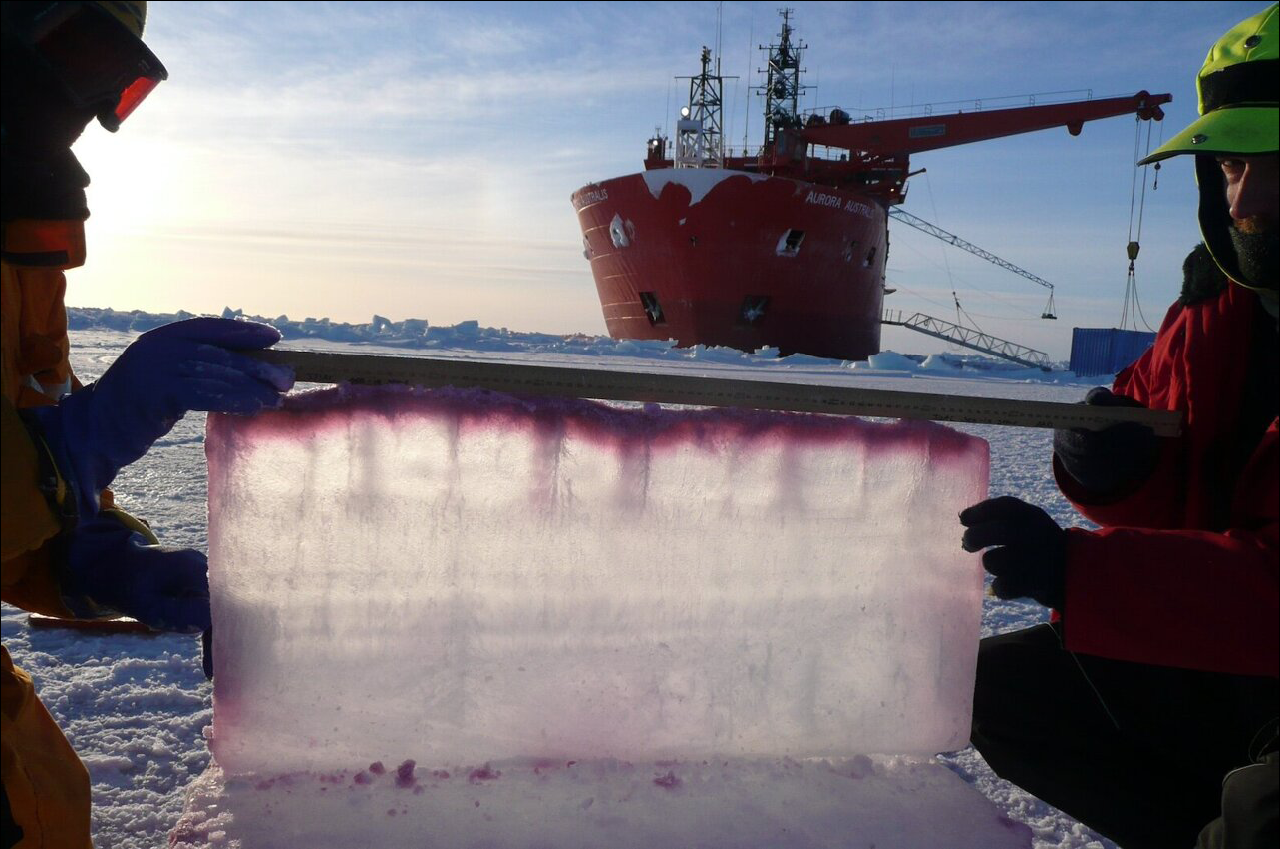博文
冷数学,热话题:应用理论为海冰导热性提供了新的见解
||
冷数学,热话题:应用理论为海冰导热性提供了新的见解
诸平
据澳大利亚麦考瑞大学(Macquarie University)2024年8月27日提供的消息,冷数学,热话题:应用理论为海冰导热性提供了新的见解(Cold math, hot topic: Applied theory offers new insights into sea ice thermal conductivity)。数学家们破解了一个海冰之谜,这可能会重塑气候模型。
一种新的应用数学理论可以增强我们对海冰如何影响全球气候的理解,有可能提高气候预测的准确性。发表在《英国皇家学会学报A辑:数学与物理科学》(Proceedings of the Royal Society A: Mathematical and Physical Sciences)上的一篇新论文(a new paper)的作者,对热量如何通过海冰传播提供了新的见解,海冰是调节地球极地气候的关键因素。原文详见:Noa Kraitzman, Rebecca Hardenbrook, Huy Dinh, N. Benjamin Murphy, Elena Cherkaev, Jingyi Zhu, Kenneth M. Golden. Homogenization for convection-enhanced thermal transport in sea ice. Proceedings of the Royal Society A: Mathematical and Physical Sciences, 2024, 480(2296). DOI: 10.1098/rspa.2023.0747. Published online: 28 August 2024. https://doi.org/10.1098/rspa.2023.0747
麦考瑞大学应用数学高级讲师、该研究的主要作者诺亚·克雷茨曼博士(Dr. Noa Kraitzman)说,这项研究解决了当前气候模型中的一个关键空白。
诺亚·克雷茨曼博士说:“在最冷的季节,海冰覆盖了海洋表面的15%左右,而这一时期海冰数量最多。这是一层薄冰层(thin layer)将大气和海洋分开,负责两者之间的热量传递。”
海冰就像海洋上的一层隔热毯,反射阳光,减缓热交换。随着全球气温上升(global temperatures rise),了解海冰的行为对于预测气候变化将变得越来越重要。这项研究的重点是海冰的热导率,这是许多全球气候模型中使用的一个关键参数。以前的模型没有考虑到海冰内液态盐水的运动,这可能会增加海冰的热传输。
诺亚·克雷茨曼博士说,海冰的独特结构,以及它对温度和盐度的敏感依赖,意味着测量和预测它的性质,特别是它的导热性是具有挑战性的。
“当你观察小规模的海冰时,有趣的是它复杂的结构,因为它是由冰、气泡和盐水包裹体(brine inclusions)组成的。由于海洋上方的大气变得非常寒冷,低于零下30摄氏度(<-30 ℃),而海水(ocean water )保持在零下2摄氏度(-2 ℃)左右,这就造成了巨大的温差,水从上到下结冰。当水迅速冻结时,它会把盐挤出来,形成一种纯冷冻水的冰基质,这种冰基质捕获了气泡和非常咸的水,称为盐水包裹体,周围是几乎纯净的冰。”
这些密集的盐水包裹体比新鲜的海水重,这导致冰内对流流动,形成巨大的“烟囱”("chimneys"),液态盐从那里流出。
这项研究建立在特罗达尔(Trodahl)1999年的早期实地工作的基础上,他首次提出海冰内的流体流动(fluid flow)可能会增强其导热性(thermal conductivity)。诺亚·克雷茨曼博士的团队现在已经为这一现象提供了数学证明。
诺亚·克雷茨曼博士说:“我们的数学计算明确表明,一旦海冰内的对流开始,这种增强应该是预料之中的。”
该模型还提供了一种将海冰的热特性与其温度和盐含量联系起来的方法,允许将理论结果与测量结果进行比较。具体来说,它提供了一个用于大规模气候模式的工具,可能导致对极地地区未来条件的更准确预测。
近几十年来,北极的海冰一直在迅速减少。冰的流失会导致一个反馈循环:随着更多的深色海水暴露出来,它会吸收更多的阳光,导致进一步的变暖和冰的流失。海冰的减少会影响气候模式、海洋环流和海洋生态系统,影响范围远远超出极地地区。诺亚·克雷茨曼博士表示,了解海冰的导热性对于预测其未来非常重要。
研究人员指出,虽然他们的模型提供了一个理论框架,但需要更多的实验工作来将这些发现整合到大规模的气候模型中。
这项研究是由澳大利亚麦考瑞大学、美国犹他大学(University of Utah)和美国新罕布什尔州达特茅斯学院(Dartmouth College, New Hampshire in the U.S)的数学家合作完成的。
上述介绍,仅供参考。欲了解更多信息,敬请注意浏览原文或者相关报道。
Cold math, hot topic: Sea ice thermal conductivity
Sea ice regulates heat exchange between the ocean and atmosphere in Earth’s polar regions. The thermal conductivity of sea ice governs this exchange, and is a key parameter in climate modelling. However, it is challenging to measure and predict due to its sensitive dependence on temperature, salinity and brine microstructure. Moreover, as temperature increases, sea ice becomes permeable, and fluid can flow through the porous microstructure. While models for thermal diffusion through sea ice have been obtained, advective contributions to transport have not been considered theoretically. Here, we homogenize a multiscale advection–diffusion equation that models thermal transport through porous sea ice when fluid flow is present. We consider two-dimensional models of convective flow and use an integral representation to derive bounds on the thermal conductivity as a function of the Péclet number. These bounds guarantee enhancement in the thermal conductivity due to the added flow. Further, we relate the Péclet number to temperature, making these bounds useful for global climate models. Our analytic approach offers a mathematical theory which can not only improve predictions of atmosphere–ice–ocean heat exchanges in climate models, but can provide a theoretical framework for a range of problems involving advection–diffusion processes in various fields of application.
https://blog.sciencenet.cn/blog-212210-1448578.html
上一篇:脑肿瘤治疗的新进展
下一篇:伽马射线激光器可能存在吗?
